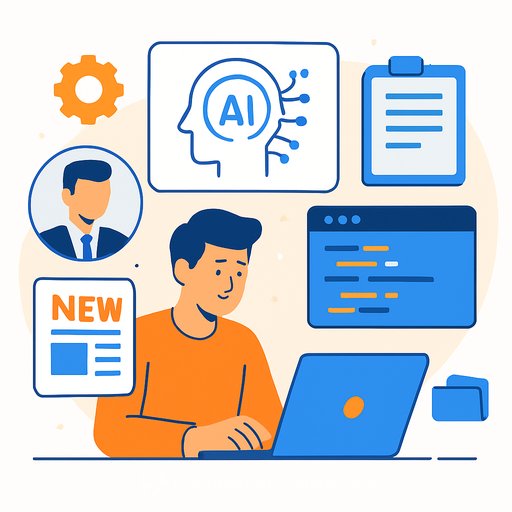Microsoft Restructures Leadership to Drive AI and Product Innovation: What Product Leaders Should Expect
Microsoft is reshaping its leadership to put AI and product outcomes at the center of execution. CEO Satya Nadella will focus on engineering collaborations across data center and systems architecture. Judson Althoff becomes CEO of the commercial business, integrating engineering, sales, marketing, and finance to tighten the loop between product and go-to-market. Takeshi Numoto will report to Althoff, anchoring marketing and planning to product strategy.
What Changed
- Engineering first: Nadella's attention on data center and systems design signals deeper bets on AI infrastructure and model-serving efficiency.
- Unified commercial engine: Althoff adds an operating model that fuses product and revenue teams, reducing friction from roadmap to adoption.
- Marketing tied to planning: Numoto's remit points to clearer messaging, pricing, and packaging around AI-driven products.
Why It Matters for Product Development
- Faster feedback cycles: Expect tighter alignment between customer signals and feature sequencing across Azure AI, Copilot, and security.
- Stronger platform bets: Investment in data center architecture suggests ongoing improvements in latency, cost-per-inference, and reliability for AI workloads.
- Clearer commercialization: Packaging and pricing moves will likely standardize adoption paths and metrics for enterprise-scale rollout.
- Cross-functional focus: The integrated structure mirrors how modern product orgs operate-anticipate more coordinated launches and lifecycle updates.
Signals From the Numbers
TTM revenue is $281.72B with a 3-year growth rate of 12.8%. Operating margin sits at 45.62% and net margin at 36.15%, providing capacity to fund AI infrastructure and product bets.
Liquidity is healthy with current and quick ratios at 1.35. Debt-to-equity is 0.18 and the Altman Z-Score is 10.15, indicating strong financial stability. One caution flag: insider selling of 154,055 shares in the past three months.
Valuation & Market Sentiment
P/E is 37.84, P/S is 13.67, and P/B is 11.17-each near recent highs, showing elevated expectations. Analyst target price is $606 with a 1.7 recommendation score (Buy). RSI at 58.05 suggests neutral momentum.
For product teams, this implies sustained pressure to convert AI usage into measurable revenue and margin-expect more emphasis on activation, seat expansion, and workload volume metrics.
Risk Check for Builders
- Execution risk: AI feature velocity vs. enterprise readiness can create adoption gaps. Design for change management and clear ROI paths.
- Market dynamics: Competitive pressure in software and AI remains high; pricing and API policies may shift.
- Volatility: Beta is 0.98 with 23.64% volatility-partnership and platform decisions should factor potential swings.
- Insider activity: Recent selling may create sentiment noise; prioritize product KPIs that prove durable value.
90-Day Action Plan for Product Leaders
- Audit your Microsoft footprint: Map dependencies across Azure AI, Copilot, M365, and security. Identify latency, cost-to-serve, and data residency risks.
- Instrument value: Define metrics that tie AI features to revenue, savings, or risk reduction. Build upgrade paths by role and tier.
- Prepare for packaging shifts: Scenario-plan SKUs, quotas, and per-user/per-tenant pricing changes. Align finance, sales ops, and CS early.
- Optimize AI unit economics: Target prompt efficiency, caching, and model selection to reduce inference cost without hurting outcomes.
- Strengthen compliance: Revalidate data governance, auditability, and export controls as AI features expand across regions.
- Maintain portability: Abstract model endpoints and storage layers where possible to reduce vendor lock-in risk.
Context: Microsoft's Operating Segments
Microsoft operates across Productivity and Business Processes, Intelligent Cloud, and More Personal Computing, with a market cap near $3.84T. Expect cross-segment synergies to intensify as AI features and infrastructure become the connective tissue across product lines.
Useful Resources
Upskill Your Team
If you lead product and need a clear path to AI capability growth across roles, explore curated programs by job function: AI courses by job.
Your membership also unlocks:






